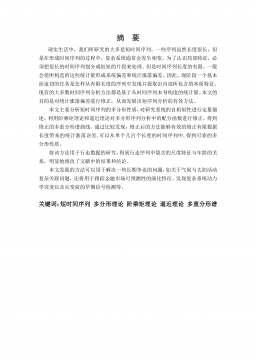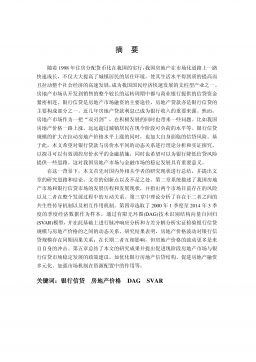基于WIA-PA的工业无线智能压力变送器的设计与实现
VIP免费
摘 要
工业仪表技术不断推陈换新,从过去传统的模拟仪表到现在的智能电子仪表,
从过去的模拟信号到现场总线数字信号,再到现在工业无线技术的引入,无不使
工业仪表技术飞速发展,和工业的发展互相促进。国外工业无线标准Wireless HART
发展最早,也是Wireless HART、ISA100、WIA-PA三大工业无线标准中最成熟的。
国内的工业WIA-PA网络标准与Wireless HART具有良好的兼容性,虽然起步比其晚,
但发展很快,还尚缺少大量仪表产品支撑,应用不够多。
本文在工业无线 WIA-PA 标准的基础上对 WIA-PA 网络的应用进行了研究,将
其应用到所要设计的无线智能压力变送器上。本文首先介绍了 WIA-PA 网络标准
的基本特点以及它的体系结构中各个层内容,并介绍了 WIA-PA 如何进行系统管
理,还对一些关键技术特点的研究和分析,为设计基于 WIA-PA 的压力变送器打
下了基础。
根据工业现场常用压力变送器的功能,设计了压力变送器,设计主要分为两
块内容,硬件部分和软件部分。在设计时,采用先总后分的方式进行。先是设计
总体方案,通过论证和分析而确定总体方案,然后是对硬件部分和软件部分进行
具体设计,设计遵循模块化设计思路,便于调试和测试。整个压力表变送器硬件
部分由 MCU 模块、数据采集模块、信号调理模块、无线通信模块、电量监测模块、
显示模块等部分组成。软件由 AD 转换模块、无线通信模块、显示模块和电量监
测模块等部分组成。
设计时,除了实现所需功能以外,硬件和软件设计都考虑了低功耗的问题,
这是无线仪器仪表续航能力的关键,也是设计实用化的关键点之一。硬件通过电
路的设计和芯片的选择体现,硬件的芯片选用性能优越且功耗低的芯片,软件则
是通过采用多种工作模式的方式,利用状态机来切换,降低了变送器的功耗,提
高了压力变送器的整体性能。
最后便是对所设计的软硬件进行调试,调试以模块化的方式进行,分别对每
个模块进行了调试与测试,每个模块基本实现功能,并获得了许多相关的调试结
果,对设计的改进和日后的产品化提供了帮助,同时也验证了方案的可行性。
关键词:WIA-PA 压力变送器 工业无线技术 低功耗
ABSTRACT
The industrial instrumentation technology is always change, from the past
traditional analogue instrument to the intelligent electronic instrument, from the analog
signal to fieldbus digital signal, and the industrial wireless technology was introduced in
recent years, all these make industrial instrumentation technology develop rapidly ,and
help industry to develop in the meanwhile. The development of industrial wireless
standard Wireless HART abroad is the earliest, and is also the most mature of the three
industrial wireless standards including Wireless HART、ISA100、IA-PA . Domestic
industrial wireless protocol standard WIA-PA have good compatibility, started later than
Wireless HART, but developing very quickly, and is lack of large number of instrument
product support, and applications are not enough.
In this paper, the application of WIA-PA networks is studied on the basis of
industrial wireless protocol WIA-PA, and then it was applied to the design of the
wireless intelligent pressure transmitter. Firstly, the paper introduced the research of the
basic characteristics of wireless protocol WIA-PA and its architecture of each layer, and
how to manage the WIA-PA system, and then researched and analyzed the
characteristics of the some key technologies, which laid a foundation for the design of
the pressure transmitter.
According to the functions of pressure transmitter of industrial site, The pressure
transmitter was designed. The design of the pressure transmitter consists of two pieces
of content, hardware part and software part. When designing, use the method of module
after overall. First, design the overall scheme, and determine the overall scheme through
argumentation and analysis, and then design the modular both of the hardware part and
software part, which is convenient for debugging and testing. The hardware part of the
pressure transmitter consists of MCU module, data acquisition module, signal
conditioning module, wireless communication module, power monitoring module,
displaying module. Software part consists of the AD conversion module, wireless
communication module, display module and power monitoring module.
When designing, both of the hardware and software are considered the problem of
low-power consumption besides the required functions, which is the key to the battery
life of wireless instrument, is also the key of application. The design of the hardware
reduced power consumption through the circuit design and the selection of superior
performance and low-power consumption chip, The mechanism of the software used a
variety of work mode by using state machine to switch, which can reduce the level of
transmitter power consumption, and improve the overall performance of the pressure
transmitter.
The last job is debugging with modular manner after design, each module has
carried on the debugging and testing, and basically realized function, and received many
relevant debugging results, which provided great help for design improvement and
production, and also validate the feasibility of the scheme.
Key Words: WIA-PA, Pressure transmitter, Industrial wireless
technology, Low-power consumption
目 录
中文摘要
ABSTRACT
第一章 绪论 ................................................................................................................ 1
1.1 课题的背景及意义 ............................................................................................ 1
1.2 国内外发展现状 ................................................................................................ 2
1.3 本文主要研究内容 ............................................................................................ 3
第二章 WIA-PA 通信协议 ......................................................................................... 4
2.1 WIA-PA 协议概述 ............................................................................................. 4
2.2 WIA-PA 网络 ..................................................................................................... 4
2.2.1 WIA-PA 网络特点 ....................................................................................... 4
2.2.2 WIA-PA 网络的组成 ................................................................................... 5
2.2.3 WIA-PA 网络的拓扑结构 ........................................................................... 5
2.3 WIA-PA 协议栈体系结构 ................................................................................. 6
2.3.1 物理层 ......................................................................................................... 6
2.3.2 数据链路层 ................................................................................................. 7
2.3.3 网络层 ......................................................................................................... 8
2.3.4 应用层 ......................................................................................................... 9
2.4 WIA-PA 网络系统管理 ..................................................................................... 9
2.4.1 WIA-PA 网络的网络管理 ........................................................................... 9
2.4.2 WIA-PA 网络的安全管理 ........................................................................... 9
2.5 WIA-PA 无线通信协议标准关键技术特点 ................................................... 12
2.5.1 时间同步 ................................................................................................... 12
2.5.2 状态机机制 ............................................................................................... 12
2.5.3 存取机制与信道跳频 ............................................................................... 14
2.5.4 路由和通信资源配置 ............................................................................... 15
2.5.5 设备加入与设备离开 ............................................................................... 15
2.6 本章小结 .......................................................................................................... 17
第三章 无线智能压力变送器的硬件设计 .............................................................. 19
3.1 系统的整体方案设计 ...................................................................................... 19
3.2 MCU 模块设计 ................................................................................................. 20
3.2.1 MCU 芯片选择 .......................................................................................... 20
3.2.2 MCU 模块设计 .......................................................................................... 21
3.3 电源模块设计 .................................................................................................. 22
3.4 数据采集模块设计 .......................................................................................... 23
3.4.1 压力传感器的构造与工作原理 ............................................................... 23
3.4.2 测量电桥电路及其补偿方法 ................................................................... 23
3.4.3 压力传感器选用 ....................................................................................... 24
3.5 信号调理模块设计 .......................................................................................... 25
3.6 电量监测模块设计 .......................................................................................... 27
3.7 AD 转换 ............................................................................................................ 29
3.8 显示模块 .......................................................................................................... 30
3.9 无线通信模块 .................................................................................................. 32
3.10 电路板设计 .................................................................................................... 33
3.10.1 原理图设计 ............................................................................................. 33
3.10.2 PCB 设计 .................................................................................................. 34
3.10.3 抗干扰设计原则 ..................................................................................... 35
3.11 本章小结 ........................................................................................................ 37
第四章 无线智能压力变送器的软件设计 .............................................................. 38
4.1 软件整体设计 .................................................................................................. 38
4.2 无线通信模块软件设计 .................................................................................. 39
4.3 ADC 转换软件设计 ......................................................................................... 42
4.4 LCD 液晶显示软件设计 .................................................................................. 45
4.5 电量监测模块设计 .......................................................................................... 48
4.6 本章小结 .......................................................................................................... 51
第五章 相关调试与测试 .......................................................................................... 52
5.1 WIA 无线平台的搭建 ...................................................................................... 52
5.2 MCU 模块的调试 ............................................................................................. 54
5.3 显示模块调试 .................................................................................................. 55
5.4 信号调理模块调试 .......................................................................................... 56
5.5 电量监测模块调试 .......................................................................................... 59
5.6 本章小结 .......................................................................................................... 60
第六章 总结与展望 .................................................................................................. 61
参考文献 .................................................................................................................... 63
在读期间公开发表的论文和承担科研项目及取得成果 ........................................ 66
致 谢 .......................................................................................................................... 67
第一章 绪论
1
第一章 绪论
1.1 课题的背景及意义
随着社会的发展,科学技术不断更新进步,计算机、微电子、传感器、无线
技术、工业仪器仪表等许多领域都有了突破性的发展。新技术革命把人类社会从
工业化社会推进到信息化社会,这就要求人们对随时间而变化的各种参量或者是
高频率动态量进行实时测量[1]。在工业应用中,时时刻刻都需要对设备的状态进行
检测和监控,而传统的仪器仪表显然无法满足高精度、宽范围、实时性高的要求,
加之半导体和微电子技术的飞速发展,电子式的仪器仪表取代传统机械式的仪器
仪表成为必然。
20 世纪 90 年代后期,现场总线技术在传感器网络中开始应用,很好地以网络
的形式将各个传感器节点连接起来,这样,现场检测设备和远程监控计算机有了
规范的通信连接,可以很好地对现场设备进行远程检测和监控。21 世纪,工业无
线技术快速发展,它很好地解决了传统仪表和现场总线仪表布线麻烦的问题。工
业无线协议中,目前有三个主流的标准,分别是 Wireless HART、ISA100.11a、
WIA-PA,其中,Wireless HART 发展最为成熟,现已有了一定的市场应用。2007
年,由沈阳自动化研究所为主的国内多家科研机构成立了中国工业无线联盟,制
定出了应用于工业过程控制的通信协议 WIA-PA,该协议标准相对于另外两个标准
更能适应国内工业环境,国内对这方面的研发和应用力度越来越大。最近几年,
由于工业生产的要求,以及工业无线发展越来越成熟,工业无线应用越来越多,
尤其是在智能仪表测量和监控方面,发展相当迅速。
目前,对于用于现场检测及监控的变送器的研究非常多,自动化仪表在新时
代高科技背景下迎来了蓬勃发展的景象。各种各样的变送器被广泛地应用于汽车、
钢铁、石油、电力、化工、国防等众多领域,使得整个社会生活生产有了质的飞
跃。本课题研究的是基于 WIA-PA 的一款应用于工业上的智能压力变送器,意在
对压力变送器的性能进行改进。压力变送器作为常用的压力检测智能仪表,将从
工业现场的被测对象那里获得压力信号,所获压力信号的精确度至关重要,将影
响整个过程生产的结果。随着微电子芯片的集成度越来越高,以及工艺的越来越
好,压力变送器的体积越来越精巧,所以应用十分灵活。无线智能变送器在原有
压力变送器优点的基础上,增加了无线传输技术,在工业中有着广阔的市场前景。
另外,通过工业无线技术不断的应用研究,不仅可以带动国内无线技术的发展,
使得工业无线技术在理论和应用上不断完善,还为仪表厂商提供新的市场增值点,
并使我国在工业无线领域方面具有竞争力。
相关推荐
-
七年级数学下册(易错30题专练)(沪教版)-第13章 相交线 平行线(原卷版)VIP免费
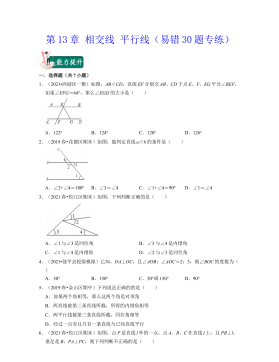
 2024-10-14 25
2024-10-14 25 -
七年级数学下册(易错30题专练)(沪教版)-第13章 相交线 平行线(解析版)VIP免费
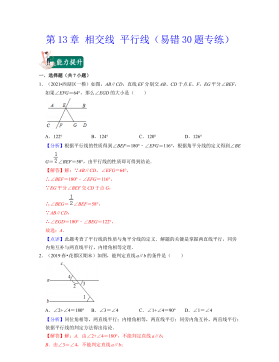
 2024-10-14 28
2024-10-14 28 -
七年级数学下册(易错30题专练)(沪教版)-第12章 实数(原卷版)VIP免费
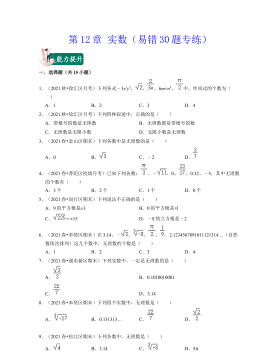
 2024-10-14 25
2024-10-14 25 -
七年级数学下册(易错30题专练)(沪教版)-第12章 实数(解析版)VIP免费
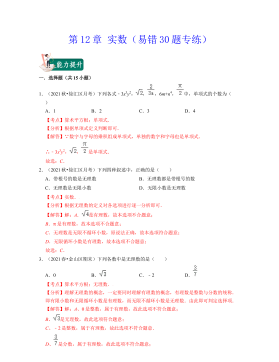
 2024-10-14 19
2024-10-14 19 -
七年级数学下册(压轴30题专练)(沪教版)-第15章平面直角坐标系(原卷版)VIP免费
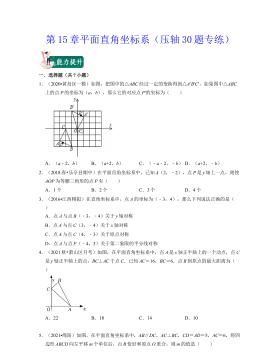
 2024-10-14 18
2024-10-14 18 -
七年级数学下册(压轴30题专练)(沪教版)-第15章平面直角坐标系(解析版)VIP免费

 2024-10-14 27
2024-10-14 27 -
七年级数学下册(压轴30题专练)(沪教版)-第14章三角形(原卷版)VIP免费

 2024-10-14 18
2024-10-14 18 -
七年级数学下册(压轴30题专练)(沪教版)-第14章三角形(解析版)VIP免费

 2024-10-14 30
2024-10-14 30 -
七年级数学下册(压轴30题专练)(沪教版)-第13章 相交线 平行线(原卷版)VIP免费
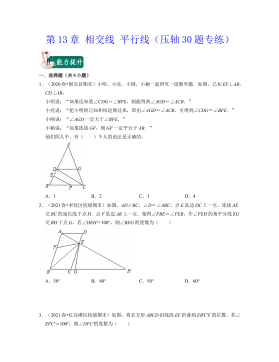
 2024-10-14 25
2024-10-14 25 -
七年级数学下册(压轴30题专练)(沪教版)-第13章 相交线 平行线(解析版)VIP免费
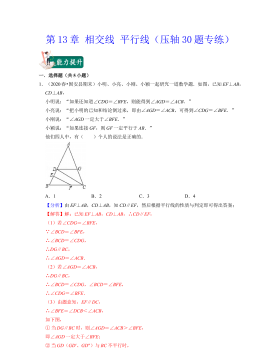
 2024-10-14 22
2024-10-14 22
作者:侯斌
分类:高等教育资料
价格:15积分
属性:70 页
大小:4.15MB
格式:PDF
时间:2025-01-09
相关内容
-

七年级数学下册(压轴30题专练)(沪教版)-第15章平面直角坐标系(原卷版)
分类:中小学教育资料
时间:2024-10-14
标签:无
格式:DOCX
价格:15 积分
-

七年级数学下册(压轴30题专练)(沪教版)-第15章平面直角坐标系(解析版)
分类:中小学教育资料
时间:2024-10-14
标签:无
格式:DOCX
价格:15 积分
-

七年级数学下册(压轴30题专练)(沪教版)-第14章三角形(原卷版)
分类:中小学教育资料
时间:2024-10-14
标签:无
格式:DOCX
价格:15 积分
-

七年级数学下册(压轴30题专练)(沪教版)-第14章三角形(解析版)
分类:中小学教育资料
时间:2024-10-14
标签:无
格式:DOCX
价格:15 积分
-

七年级数学下册(压轴30题专练)(沪教版)-第13章 相交线 平行线(原卷版)
分类:中小学教育资料
时间:2024-10-14
标签:无
格式:DOCX
价格:15 积分


